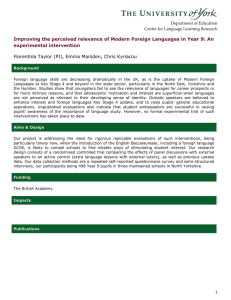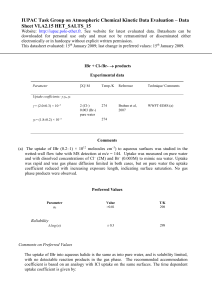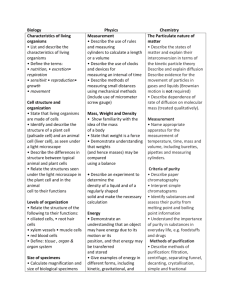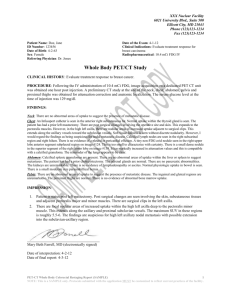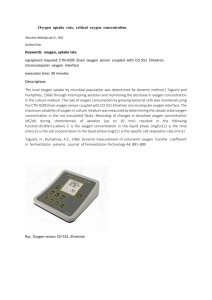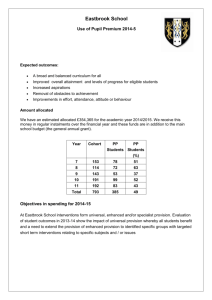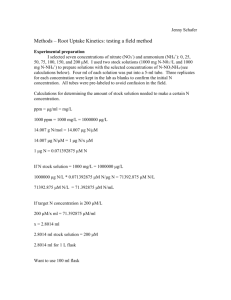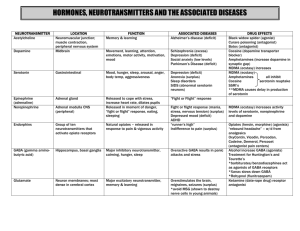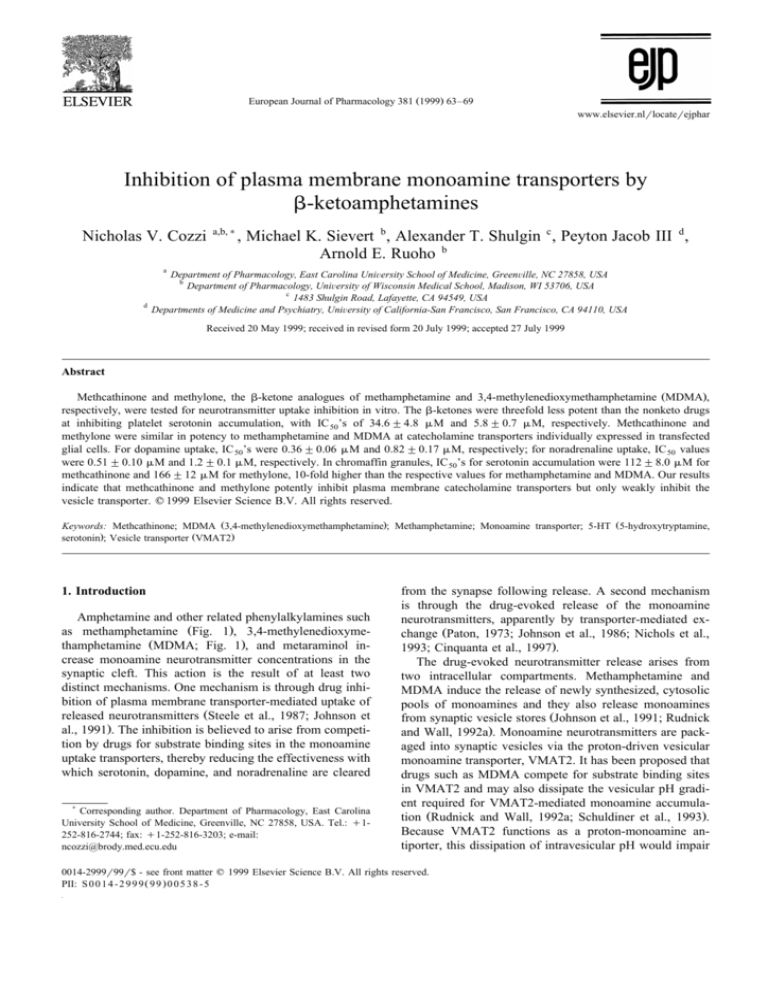
European Journal of Pharmacology 381 Ž1999. 63–69
www.elsevier.nlrlocaterejphar
Inhibition of plasma membrane monoamine transporters by
b-ketoamphetamines
Nicholas V. Cozzi
a,b,)
, Michael K. Sievert b, Alexander T. Shulgin c , Peyton Jacob III d ,
Arnold E. Ruoho b
a
d
Department of Pharmacology, East Carolina UniÕersity School of Medicine, GreenÕille, NC 27858, USA
b
Department of Pharmacology, UniÕersity of Wisconsin Medical School, Madison, WI 53706, USA
c
1483 Shulgin Road, Lafayette, CA 94549, USA
Departments of Medicine and Psychiatry, UniÕersity of California-San Francisco, San Francisco, CA 94110, USA
Received 20 May 1999; received in revised form 20 July 1999; accepted 27 July 1999
Abstract
Methcathinone and methylone, the b-ketone analogues of methamphetamine and 3,4-methylenedioxymethamphetamine ŽMDMA.,
respectively, were tested for neurotransmitter uptake inhibition in vitro. The b-ketones were threefold less potent than the nonketo drugs
at inhibiting platelet serotonin accumulation, with IC 50’s of 34.6 " 4.8 mM and 5.8 " 0.7 mM, respectively. Methcathinone and
methylone were similar in potency to methamphetamine and MDMA at catecholamine transporters individually expressed in transfected
glial cells. For dopamine uptake, IC 50’s were 0.36 " 0.06 mM and 0.82 " 0.17 mM, respectively; for noradrenaline uptake, IC 50 values
were 0.51 " 0.10 mM and 1.2 " 0.1 mM, respectively. In chromaffin granules, IC 50’s for serotonin accumulation were 112 " 8.0 mM for
methcathinone and 166 " 12 mM for methylone, 10-fold higher than the respective values for methamphetamine and MDMA. Our results
indicate that methcathinone and methylone potently inhibit plasma membrane catecholamine transporters but only weakly inhibit the
vesicle transporter. q 1999 Elsevier Science B.V. All rights reserved.
Keywords: Methcathinone; MDMA Ž3,4-methylenedioxymethamphetamine.; Methamphetamine; Monoamine transporter; 5-HT Ž5-hydroxytryptamine,
serotonin.; Vesicle transporter ŽVMAT2.
1. Introduction
Amphetamine and other related phenylalkylamines such
as methamphetamine ŽFig. 1., 3,4-methylenedioxymethamphetamine ŽMDMA; Fig. 1., and metaraminol increase monoamine neurotransmitter concentrations in the
synaptic cleft. This action is the result of at least two
distinct mechanisms. One mechanism is through drug inhibition of plasma membrane transporter-mediated uptake of
released neurotransmitters ŽSteele et al., 1987; Johnson et
al., 1991.. The inhibition is believed to arise from competition by drugs for substrate binding sites in the monoamine
uptake transporters, thereby reducing the effectiveness with
which serotonin, dopamine, and noradrenaline are cleared
)
Corresponding author. Department of Pharmacology, East Carolina
University School of Medicine, Greenville, NC 27858, USA. Tel.: q1252-816-2744; fax: q1-252-816-3203; e-mail:
ncozzi@brody.med.ecu.edu
from the synapse following release. A second mechanism
is through the drug-evoked release of the monoamine
neurotransmitters, apparently by transporter-mediated exchange ŽPaton, 1973; Johnson et al., 1986; Nichols et al.,
1993; Cinquanta et al., 1997..
The drug-evoked neurotransmitter release arises from
two intracellular compartments. Methamphetamine and
MDMA induce the release of newly synthesized, cytosolic
pools of monoamines and they also release monoamines
from synaptic vesicle stores ŽJohnson et al., 1991; Rudnick
and Wall, 1992a.. Monoamine neurotransmitters are packaged into synaptic vesicles via the proton-driven vesicular
monoamine transporter, VMAT2. It has been proposed that
drugs such as MDMA compete for substrate binding sites
in VMAT2 and may also dissipate the vesicular pH gradient required for VMAT2-mediated monoamine accumulation ŽRudnick and Wall, 1992a; Schuldiner et al., 1993..
Because VMAT2 functions as a proton-monoamine antiporter, this dissipation of intravesicular pH would impair
0014-2999r99r$ - see front matter q 1999 Elsevier Science B.V. All rights reserved.
PII: S 0 0 1 4 - 2 9 9 9 Ž 9 9 . 0 0 5 3 8 - 5
64
N.V. Cozzi et al.r European Journal of Pharmacology 381 (1999) 63–69
Fig. 1. Chemical structures of test compounds.
the ability of VMAT2 to transport the endogenous
monoamines ŽSulzer and Rayport, 1990; Rudnick and Wall,
1993..
Methcathinone Ž2-methylamino-1-phenylpropan-1-one,
Fig. 1. and methylone Ž2-methylamino-1-w3,4-methylenedioxyphenylxpropan-1-one, Fig. 1. are two drugs which
resemble methamphetamine and MDMA, respectively, in
their behavioral pharmacology. These drugs differ structurally from methamphetamine and MDMA by the presence of a ketone oxygen at the benzylic position of the
molecule. To further our understanding of the action of
amphetamine-like drugs at biogenic amine transporters and
to refine structure–activity relationships of transporter ligands, we investigated the effects of methcathinone and
methylone on monoamine uptake in vitro.
Methcathinone is the N-methyl derivative of cathinone,
a naturally occurring psychostimulant found in the leaves
of Catha edulis, the khat bush. Methcathinone was first
synthesized in 1928 ŽHyde et al., 1928. but its psychopharmacology remained unexplored until Parke, Davis developed methcathinone as an analeptic in the late 1950’s
ŽL’Italien et al., 1957.. More recently, methcathinone has
been used outside of medical settings for its euphoric
properties and is now designated a Schedule I Controlled
Substance in the United States ŽAnonymous, 1993; Rosen,
1993.. Behavioral studies have shown that methcathinone
will substitute for cocaine or amphetamine in animals
trained to discriminate either cocaine or amphetamine from
saline in stimulus generalization tests ŽGlennon et al.,
1987; Young and Glennon, 1993.. Baboons will self-administer methcathinone, confirming that the drug has reinforcing properties ŽKaminski and Griffiths, 1994.. A study
by Gygi et al. Ž1996. found that methcathinone significantly decreases several important neurochemical markers
associated with monoaminergic function in the rat. In
particular, methcathinone reduced tyrosine hydroxylase and
tryptophan hydroxylase activity, with corresponding decreases in the concentrations of dopamine, serotonin, and
their respective metabolites in frontal cortex, hippocampus,
and neostriatum. The mechanism for these effects has not
been fully elucidated, but in the report by Glennon et al.
Ž1987., methcathinone stimulated the release of w3 Hxdopamine from preloaded striatal tissue. A more recent
study by Gygi et al. Ž1997. also demonstrated that methcathinone could stimulate dopamine release and that
dopaminergic deficits could be prevented by pretreatment
with dopamine D 1 or D 2 receptor antagonists.
There are few reports in the literature regarding methylone, the benzylic ketone analog of MDMA. Dal Cason
Ž1997. presented chemical analytical data on methylone
and several other N-substituted aminopropiophenones. A
drug discrimination study by Dal Cason et al. Ž1997.
reported behavioral data for methylone. In this account,
methylone substituted for MDMA in rats trained to discriminate MDMA from saline, with an ED50 of 1.6 mgrkg.
At similar doses, methylone did not substitute for Žq.amphetamine in amphetamine-trained animals, nor did it
substitute for the hallucinogen 2-amino-1-Ž2,5-dimethoxy4-methylphenyl.propane ŽDOM. in DOM-trained rats.
From what is known about the neuropharmacology of
methamphetamine and MDMA and because of the chemical structural similarity to methamphetamine and MDMA,
we hypothesized that methcathinone and methylone would
also act on monoaminergic systems, specifically through
the monoamine uptake transporters. To test this hypothesis, we compared methcathinone and methylone to
methamphetamine and MDMA for their abilities to inhibit
w3 Hxserotonin, w3 Hxdopamine, and w3 Hxnoradrenaline uptake
via the plasma membrane uptake transporters and to inhibit
w3 Hxserotonin uptake by the vesicular monoamine transporter, VMAT2.
2. Materials and methods
2.1. Drugs and reagents
Methcathinone, methamphetamine, methylone, and
MDMA were synthesized in racemic form in our laborato-
N.V. Cozzi et al.r European Journal of Pharmacology 381 (1999) 63–69
ries. All analytical data were consistent with the assigned
structures. w3 HxSerotonin Žspecific activity s 27.8 Cir
mmol., w3 H xdopamine Žspecific activity s 24 Cir
mmol., and w3 Hxnoradrenaline Žspecific activitys 71.7 Cir
mmol. were purchased from New England Nuclear, Boston,
MA. Cell culture medium and antibiotics were obtained
from Life Technologies, Gaithersburg, MD. Fetal bovine
serum was purchased from Hyclone, Logan, UT. Pargyline, buffer salts, and miscellaneous chemicals were acquired from Aldrich Chemical, Milwaukee, WI.
2.2. Serotonin plasma membrane uptake transporter:
[3H]serotonin uptake into human platelets
Outdated human platelets were obtained from the blood
bank at the University of Wisconsin Clinical Sciences
Center or from the Veteran’s Administration Hospital,
Madison, WI. Platelets from 5–10 donors were pooled,
10% dimethylsulfoxide was added, and aliquots were stored
frozen at y808C until use. For assays, 5 ml of platelets
were thawed and added to 20 ml ice-cold Krebs–Ringer–
HEPES ŽKRH. buffer containing ŽmM.: NaCl Ž124.0.,
KCl Ž2.9., MgSO4 Ž1.3., KH 2 PO4 Ž1.2., CaCl 2 Ž2.4.,
d-glucose Ž5.2., HEPES Ž25.0., sodium ascorbate Ž0.1.,
pargyline Ž0.1., pH s 7.4. The platelet suspension was
subjected to centrifugation Ž4340 = g, 48C, 10 min. and
the supernatant was discarded. The pellet was washed
twice by resuspension in KRH and centrifugation. The
final pellet was suspended in 70 ml ice-cold KRH using a
polytron Žsetting 7, 10 s. and stored on ice until use. The
ability of platelets to accumulate w3 Hxserotonin was measured in the absence and presence of various concentrations of test drugs as follows: a 400 ml aliquot of the
platelet suspension was added to glass tubes containing 50
ml test drugs Ždissolved in KRH. or 50 ml KRH Žfor total
and nonspecific determinations.. The assay tubes were
preincubated in a 378C shaking water bath for 5 min. The
tubes were then returned to the ice bath and chilled for 15
min. w3 HxSerotonin was added Ž50 ml of stock solution;
final concentration, 10 nM., giving a total incubation
volume of 500 ml. All tubes except nonspecific tubes were
returned to the 378C shaking water bath for 5 min to
initiate neurotransmitter uptake. Uptake was terminated by
chilling the test tubes in the ice bath. After adding 3 ml
ice-cold KRH, each assay tube was immediately vacuum
filtered through glass fiber filters ŽWhatman GFrB. pretreated with 0.1% polyethyleneimine. Filters were washed
with 2 = 3 ml ice-cold KRH, allowed to dry briefly under
vacuum, then placed in liquid scintillation vials. Scintillation cocktail Ž8 ml. was added and the vials were sealed,
vortexed, and allowed to stand overnight. Radioactivity
was measured using liquid scintillation spectroscopy
ŽPackard Tri-Carb 1600 CA.. Specific uptake was defined
as uptake at 378C minus uptake at 08C in the absence of
drugs. Under these conditions, specific w3 Hxserotonin uptake was typically greater than 90%. The IC 50 " S.E.M.
65
for each test drug was determined from displacement
curves from 3–8 experiments using 6–11 drug concentrations, each run in triplicate. Data were transformed from
dpm to % specific uptake and fitted to a four-parameter
logistic curve using commercial computer software, from
which IC 50 values were calculated.
2.3. Dopamine plasma membrane uptake transporter:
[3H]dopamine uptake into transfected cells
C6 glial cells stably expressing the rat dopamine transporter ŽC6-DAT. were obtained from Dr. Susan Amara
ŽOregon Health Sciences University, Portland, OR.. Cells
were maintained in a humidified atmosphere Ž5% CO 2 in
air. in selective culture medium: Dulbecco’s Modified
Eagle’s Medium ŽDMEM. containing 10% fetal bovine
serum and antibiotics Ž100 Urml penicillin, 100 mgrml
streptomycin, 100 mgrml geneticin.. For assays, 3 = 100
mm dishes of confluent cells were washed with phosphate
buffered saline, pH s 7.1. The cells were then treated with
trypsinrEDTA and split into 4 = 6-well Ž35 mm. plates in
2 mlrwell culture medium minus geneticin. After passage,
the cells were allowed to grow overnight and were used
for uptake assays the following day. The ability of the test
drugs to inhibit w3 Hxdopamine uptake was measured as
follows: the DMEM was aspirated from the 6-well plates
containing confluent C6-DAT cells. The cells were washed
with 2 = 2 ml 378C KRH, then 490 ml 378C KRH was
added to each well. This was followed by the addition of 5
ml KRH Žfor total determinations., 5 ml of 10 mM cocaine
hydrochloride stock solution Žfor nonspecific determinations; final concentration, 100 mM., or 5 ml of test drug
solution. The plates were preincubated at 378C for 15 min,
then 5 ml of w3 Hxdopamine Žfinal concentration, 20 nM.
was added to each well to initiate uptake. Uptake was
allowed to proceed for 20 min, then the incubation buffer
was discarded and the cells were washed with 3 = 2 ml
ice-cold KRH. The cells were solubilized in 500 ml 378C
1% sodium dodecyl sulfate, then the solubilized well contents were transferred to liquid scintillation vials containing 3 ml scintillation cocktail. Radioactivity was measured
and data were analyzed as described for platelets.
2.4. Noradrenaline plasma membrane uptake transporter:
[3H]noradrenaline uptake into transfected cells
C6 glial cells stably expressing the human noradrenaline transporter ŽC6-NET. were also a gift from Dr. Susan
Amara. Assays and work-up were performed exactly as
described for dopamine uptake, except w3 Hxnoradrenaline
was used as the radiolabeled substrate.
2.5. Vesicular monoamine transporter (VMAT2):
[3H]serotonin uptake into boÕine chromaffin granules
Chromaffin vesicles were prepared from bovine adrenal
medullae as follows: 150 bovine adrenals from freshly
66
N.V. Cozzi et al.r European Journal of Pharmacology 381 (1999) 63–69
slaughtered animals were collected at Peck’s slaughterhouse in Milwaukee, WI. The adrenal glands were bisected
and the medullae were scraped out and put into ice-cold
0.3 M sucrose, 10 mM HEPES, pH s 7.0. The medullae
were minced with a polytron Žsetting 10, 3 s. then homogenized with a motor-driven Potter–Elvehjem tissue grinder
Žsetting 10, 10 passes.. After removal of the unbroken cells
and nuclei by centrifugation, the chromaffin granule membranes were pelleted through 1.6 M sucrose at 100,000 = g
for 60 min. Chromaffin vesicle ghosts were prepared by
osmotically lysing these crude granules in hypotonic buffer
containing ŽmM.: HEPES Ž5., MgSO4 Ž2., CaCl 2 Ž10.,
dithiothreitol Ž0.1., pH s 7.5. The membranes were recovered by centrifugation at 100,000 = g for 60 min. The
vesicles were resealed by suspending the pellets in storage
buffer containing ŽmM.: sucrose Ž300., HEPES Ž10.,
MgSO4 Ž2., dithiothreitol Ž0.1., pH s 7.0 at a concentration of 5–10 mgrml. Aliquots were snap-frozen in liquid
N2 and stored at y808C. For uptake assays, chromaffin
vesicle ghosts were diluted in assay buffer containing
ŽmM.: sucrose Ž300., HEPES Ž10., ATP Ž5., MgSO4 Ž5.,
pH s 7.8 to a final volume of 0.5 ml. The samples were
incubated at 378C for 10 min and then cooled on ice for 10
min. Uptake was tested in the absence or presence of
various concentrations of the test drugs added to the assay
buffer. Nonspecific uptake was defined by 10 mM reserpine. w3 HxSerotonin was added to a final concentration of
10 nM and the samples were incubated for 5 min at 378C
to initiate uptake. The samples were then transferred to an
ice bath and individual samples were removed, diluted
with 4 ml of ice-cold assay buffer minus ATP and MgSO4 ,
then collected on cellulose acetate filters ŽMillipore type
HAWP, 0.45 mm pore size. by vacuum filtration. The
filters were washed with 2 = 4 ml of ice-cold assay buffer.
Filters were transferred to scintillation vials and 4 ml
scintillation cocktail was added. Radioactivity was measured and data were analyzed as described for platelets.
only early passage cells for our experiments involving
w3 Hxdopamine.
Representative drug uptake inhibition curves, depicted
for VMAT2-mediated w3 Hxserotonin uptake into bovine
chromaffin granules, are shown in Fig. 2. IC 50 values "
S.E.M. for all drugs and transporter systems are summarized in Table 1. All inhibition curves had slope coefficients of unity, indicating that the test drugs interacted
with a single site on the transporter proteins.
In human platelets, which contain the plasma membrane
serotonin uptake transporter, methcathinone had an IC 50 of
34.6 " 4.8 mM; this was threefold less potent Ž P - 0.05.
than methamphetamine. Likewise, methylone was threefold less potent Ž P - 0.01. than MDMA at inhibiting
w3 Hxserotonin uptake into platelets, with an IC 50 of 5.75 "
0.68 mM. In C6 glial cells stably expressing the rat
dopamine transporter, methcathinone and methylone were
similar in potency to methamphetamine and MDMA, with
IC 50 ’s for w3 Hxdopamine uptake of 0.356 " 0.059 mM and
0.819 " 0.168 mM, respectively. Methcathinone and methylone were also similar in potency to methamphetamine
and MDMA in C6 cells expressing the human noradrenaline transporter, with IC 50 ’s for w3 Hxnoradrenaline accumulation of 0.511 " 0.096 mM and 1.22 " 0.13 mM, respectively. The benzylic ketone moiety of methcathinone and
methylone had a large effect on the ability of these drugs
to inhibit the vesicular monoamine transporter, compared
to methamphetamine and MDMA. In VMAT2-containing
bovine chromaffin granules, the IC 50 values for w3 Hxserotonin uptake were 112.1 " 7.98 mM for methcathinone and
165.6 " 11.7 mM for methylone. These values are greater
2.6. Statistics
Pairwise comparisons of the IC 50 values for different
drugs, derived from nonlinear regression analysis of the
inhibition data, were made using Student’s t-test with
P - 0.05 considered significant. All values are expressed
as the mean " standard error of the mean ŽS.E.M...
3. Results
Specific radiolabeled neurotransmitter uptake was robust and typically greater than 90%, except for w3 Hxdopamine uptake into C6-DAT cells. In this system, specific
w3 Hxdopamine uptake was initially just over 50%, but
decreased after repeated cell passages. Therefore, we used
Fig. 2. Drug inhibition of VMAT2-mediated w3 Hxserotonin uptake. The
ability of test drugs to inhibit accumulation of 10 nM w3 Hxserotonin was
examined in bovine chromaffin granules. Specific uptake was defined by
10 mM reserpine. Data are the mean"S.E.M. of three determinations,
each run in triplicate. Data were fitted to a four-parameter logistics curve
for IC 50 determination and plotting. Symbols: methamphetamine, solid
circles; MDMA, solid squares; methcathione, open circles; methylone,
open squares.
N.V. Cozzi et al.r European Journal of Pharmacology 381 (1999) 63–69
67
Table 1
IC 50 values ŽmM. for drug inhibition of monoamine uptakea
Drug
Methcathinone
Methamphetamine
Methylone
MDMA
w3 Hxserotonin
bc
34.6 " 4.8
11.6 " 1.0 e
5.75 " 0.68 e
2.14 " 0.34
w3 Hxdopamine
w3 Hxnoradrenaline
VMAT2 Žw3 Hxserotonin.
0.356 " 0.059
0.467 " 0.051
0.819 " 0.168
0.478 " 0.107
0.511 " 0.096
0.647 " 0.032
1.22 " 0.13
1.38 " 0.10
112.1 " 7.98 d
10.9 " 2.0
165.6 " 11.7 e
12.7 " 1.6
a
The ability of test drugs to inhibit monoamine accumulation was examined as described under Section 2. Test compounds were examined with 6–11
concentrations, each run in triplicate. The data from 3–8 experiments were combined and the IC 50 values" S.E.M. were calculated by curve fitting.
Pairwise comparisons were made using Student’s t-test.
b
P - 0.05 vs. methamphetamine.
c
P - 0.01 vs. methylone.
d
P - 0.01 vs. methamphetamine.
e
P - 0.01 vs. MDMA.
than 10-fold higher Ž P - 0.01. than the values for
methamphetamine and MDMA, respectively.
4. Discussion
Methcathinone and methylone are two b-ketoamphetamines that resemble methamphetamine and
MDMA, respectively, in self-administration and drug-discrimination paradigms. However, scant information on the
molecular pharmacology of the b-ketoamphetamines is
available in the literature. We hypothesized that these
drugs would inhibit biogenic amine uptake mediated
through the plasma membrane and vesicular monoamine
uptake carriers. To test this hypothesis, we employed
human platelets as a source of serotonin uptake transporters and we used two stable transfected cell lines,
C6-DAT and C6-NET, as sources for the dopamine and
noradrenaline uptake transporters, respectively. To evaluate drug effects at the synaptic vesicle, we used bovine
chromaffin granules. The chromaffin granule contains the
proton-driven vesicle monoamine transporter VMAT2, and
is a widely accepted model for biogenic amine uptake and
storage in synaptic vesicles.
Our data for methamphetamine and MDMA ŽTable 1.
are in good agreement with earlier studies ŽRudnick and
Wall, 1992a,b, 1993.. After reviewing reports on the behavioral effects of methcathinone and methylone, we anticipated that these drugs would resemble methamphetamine
and MDMA in their respective pharmacological profiles at
the monoamine uptake transporters. Our results indicate
that this is true only for drug effects at the catecholamine
transporters. At the dopamine and noradrenaline carriers,
the b-ketoamphetamine compounds were as potent as the
respective nonketo drugs at inhibiting monoamine accumulation, and all of the test drugs were more potent at the
dopamine transporter than at the noradrenaline transporter
ŽTable 1.. At the serotonin uptake carrier, the aryl ketone
group of methcathinone and methylone had a small but
significant effect on the drugs’ ability to inhibit serotonin
accumulation. In this system, the b-ketoamphetamines were
only one-third as potent as their respective nonketo analogues. We also observed that the ring 3,4-methylenedioxy
group of methylone and MDMA led to increased potency
at this transporter compared to methcathinone and
methamphetamine ŽTable 1.. This outcome was not surprising in light of the consistently higher potency of
serotonin transporter inhibition exhibited by a variety of
phenylalkylamines substituted at the ring 3- andror 4-positions ŽMcKenna et al., 1991; Huang et al., 1992; Nichols et
al., 1993.. We propose that there is a pocket within the
substrate binding domain of the serotonin transporter that
can accommodate substituents at the meta- or para-positions of arylalkylamine ligands. According to this model,
occupation of the pocket by such substituents imparts
increased stability to the ligand-protein complex, leading
to higher potency.
The biggest differences among these compounds were
observed at VMAT2. The 10-fold reduction in potency of
methcathinone and methylone at VMAT2, compared to
methamphetamine and MDMA, is surprising: several other
compounds structurally related to amphetamine, such as
p-chloroamphetamine, 5-methoxy-6-methyl-2-aminoindan,
3-methoxy-4-methylamphetamine, and MDMA itself have
been reported to inhibit VMAT2-mediated neurotransmitter uptake with IC 50 ’s in the nanomolar to low micromolar range ŽRudnick and Wall, 1992a,b, 1993.. Our own
data for methamphetamine and MDMA at VMAT2 are in
accord with these values, but the b-keto compounds required concentrations in excess of 100 mM to achieve
half-maximal inhibition. Because VMAT2 is relatively
indiscriminate in its substrate specificity, and because
methcathinone and methylone differ from methamphetamine and MDMA only by the presence of the benzylic oxygen atom, we did not expect such a large difference in potency.
The inhibition of VMAT2-mediated uptake by phenylalkylamines has been attributed to the ability of these
compounds to act as substrates for VMAT2, thereby competing for transporter binding sites and also stimulating
transporter-mediated exchange. Another potential mechanism for amphetamine inhibition of vesicular transport is
through dissipation of the pH gradient Žinside acidic. that
drives VMAT2-mediated uptake ŽRudnick and Wall,
1992a; Schuldiner et al., 1993.. This mechanism is proba-
68
N.V. Cozzi et al.r European Journal of Pharmacology 381 (1999) 63–69
bly not of practical importance in the psychopharmacology
of methamphetamine or MDMA because the EC 50 required for dissipation of the pH gradient by amphetamine
derivatives ranges from 160 mM to 1 mM ŽRudnick and
Wall, 1992a,b, 1993.; these concentrations are at least
10-fold higher than the IC 50 ’s for VMAT2 uptake inhibition by methamphetamine and MDMA ŽTable 1.. Thus,
methamphetamine and MDMA have a major impact on
vesicular monoamine uptake at concentrations well below
those needed to affect the pH gradient. While we did not
test whether methcathinone or methylone neutralize the
vesicular pH gradient, the IC 50 ’s for uptake inhibition for
these drugs at VMAT2 are similar to the EC 50 ’s for pH
dissipation by other amphetamine derivatives and in any
case are two orders of magnitude higher than the IC 50 ’s at
the plasma membrane catecholamine transporters. Therefore, we propose that the behavioral effects of methcathinone and methylone arise largely from the drugs’ effects at
the plasma membrane transporters, not VMAT2. We conclude that while methamphetamine and MDMA are likely
to be substrates for VMAT2, methcathinone and methylone are not. Further, because it has already been shown
that methcathinone and methylone resemble methamphetamine and MDMA in their respective behavioral profiles ŽGlennon et al., 1987; Kaminski and Griffiths, 1994;
Dal Cason et al., 1997., our results imply that the psychopharmacological effects of methamphetamine and
MDMA are independent of their inhibition of VMAT2.
Apparently, activity at the plasma membrane transporters
is sufficient to account for the behavioral effects of these
drugs.
In summary, due to the large decrease in potency at
VMAT2, methcathinone and methylone are highly selective for the plasma membrane catecholamine transporters
and moderately selective for the serotonin carrier. As a
result of its greater potency at the serotonin carrier, methylone is somewhat less discriminating than methcathinone
at the plasma membrane. Indeed, both 3,4-methylenedioxy-substituted compounds, methylone and MDMA,
are more potent at the serotonin transporter than the unsubstituted drugs. The psychopharmacology of these drugs is
most likely governed by their effects at the plasma membrane monoamine transporters, but not VMAT2. Because
methcathinone and methylone differ from methamphetamine and MDMA only by the presence of an oxygen
atom at the benzylic position, the large decrease in potency
at VMAT2 must reflect the biochemistry or topology of
the substrate binding site in VMAT2. Thus, both the
benzylic position and the aromatic ring of these molecules
carry important structural information for recognition by
the neurotransmitter transporter proteins.
Acknowledgements
This work was supported by grants from the National
Alliance for Research on Schizophrenia and Depression
ŽN.V.C.., the American Heart Association ŽM.K.S.., and
United States Public Health Service NIH grant NS33650
ŽA.E.R... We thank Kevin Foley and Jacqueline Masterson
for excellent technical support.
References
Anonymous, 1993. Federal Register 58, 53404–53406.
Cinquanta, M., Ratovitski, T., Crespi, D., Gobbi, M., Mennini, T.,
Simantov, R., 1997. Carrier-mediated serotonin release induced by
d-fenfluramine: studies with human neuroblastoma cells transfected
with a rat serotonin transporter. Neuropharmacology 36, 803–809.
Dal Cason, T.A., 1997. The characterization of some 3,4-methylenedioxycathinone ŽMDCATH. homologs. Forensic Sci. Int. 87, 9–53.
Dal Cason, T.A., Young, R., Glennon, R.A., 1997. Cathinone: an investigation of several N-alkyl and methylenedioxy-substituted analogs.
Pharmacol. Biochem. Behav. 58, 1109–1116.
Glennon, R.A., Yousif, M., Naiman, N., Kalix, P., 1987. Methcathinone:
a new and potent amphetamine-like agent. Pharmacol. Biochem.
Behav. 26, 547–551.
Gygi, M.P., Gibb, J.W., Hanson, G.R., 1996. Methcathinone: an initial
study of its effects on monoaminergic systems. J. Pharmacol. Exp.
Ther. 276, 1066–1072.
Gygi, M.P., Fleckenstein, A.E., Gibb, J.W., Hanson, G.R., 1997. Role of
endogenous dopamine in the neurochemical deficits induced by methcathinone. J. Pharmacol. Exp. Ther. 283, 1350–1355.
Huang, X., Marona-Lewicka, D., Nichols, D.E., 1992. p-Methylthioamphetamine is a potent new non-neurotoxic serotonin-releasing
agent. Eur. J. Pharmacol. 229, 31–38.
Hyde, J.F., Browning, E., Adams, R., 1928. Synthetic homologs of
DL-ephedrine. J. Am. Chem. Soc. 50, 2287–2292.
Johnson, M.P., Hoffman, A.J., Nichols, D.E., 1986. Effects of the
enantiomers of MDA, MDMA and related analogues on w3 Hxserotonin
and w3 Hxdopamine release from superfused rat brain slices. Eur. J.
Pharmacol. 132, 269–276.
Johnson, M.P., Conarty, P.F., Nichols, D.E., 1991. w3 HxMonoamine releasing and uptake inhibition properties of 3,4-methylenedioxymethamphetamine and p-chloroamphetamine analogues. Eur. J.
Pharmacol. 200, 9–16.
Kaminski, B.J., Griffiths, R.R., 1994. Intravenous self-injection of methcathinone in the baboon. Pharmacol. Biochem. Behav. 47, 981–983.
L’Italien, Y.J., Park, H., Rebstock, M.C., 1957. Methylaminopropiophenone compounds and methods for producing the same. US Patent a
2802865.
McKenna, D.J., Guan, X.M., Shulgin, A.T., 1991. 3,4-Methylenedioxyamphetamine ŽMDA. analogues exhibit differential effects on
synaptosomal release of 3 H-dopamine and 3 H-5-hydroxytryptamine.
Pharmacol. Biochem. Behav. 38, 505–512.
Nichols, D.E., Marona-Lewicka, D., Huang, X., Johnson, M.P., 1993.
Novel serotonergic agents. Drug Des. Discov. 9, 299–312.
Paton, D.M., 1973. Mechanism of efflux of noradrenaline from adrenergic nerves in rabbit atria. Br. J. Pharmacol. 49, 614–627.
Rosen, D.S., 1993. Methcathinone. J. Adoles. Health 14, 426.
Rudnick, G., Wall, S.C., 1992a. The molecular mechanism of ecstasy
w3,4-methylenedioxy-methamphetamine ŽMDMA.x: serotonin transporters are targets for MDMA-induced serotonin release. Proc. Natl.
Acad. Sci. U.S.A. 89, 1817–1821.
Rudnick, G., Wall, S.C., 1992b. p-Chloroamphetamine induces serotonin
release through serotonin transporters. Biochemistry 31, 6710–6718.
Rudnick, G., Wall, S.C., 1993. Non-neurotoxic amphetamine derivatives
release serotonin through serotonin transporters. Mol. Pharmacol. 43,
271–276.
Schuldiner, S., Steiner-Mordoch, S., Yelin, R., Wall, S.C., Rudnick, G.,
1993. Amphetamine derivatives interact with both plasma membrane
N.V. Cozzi et al.r European Journal of Pharmacology 381 (1999) 63–69
and secretory vesicle biogenic amine transporters. Mol. Pharmacol.
44, 1227–1231.
Steele, T.D., Nichols, D.E., Yim, G.K., 1987. Stereochemical effects of
3,4-methylenedioxymethamphetamine ŽMDMA. and related amphetamine derivatives on inhibition of uptake of w3 Hxmonoamines into
synaptosomes from different regions of rat brain. Biochem. Pharmacol. 36, 2297–2303.
69
Sulzer, D., Rayport, S., 1990. Amphetamine and other psychostimulants
reduce pH gradients in midbrain dopaminergic neurons and chromaffin granules: a mechanism of action. Neuron 5, 797–808.
Young, R., Glennon, R.A., 1993. Cocaine-stimulus generalization to two
new designer drugs: methcathinone and 4-methylaminorex. Pharmacol. Biochem. Behav. 45, 229–231.

